Nothing and Stay Out
10 Feb 2013
Note: OTHER CINEMA hosts art and cultural critic Doug Harvey to launch his recent publication, 'patacritical Interrogation Techniques Anthology Volume 3, on Saturday, April 6, 2013!
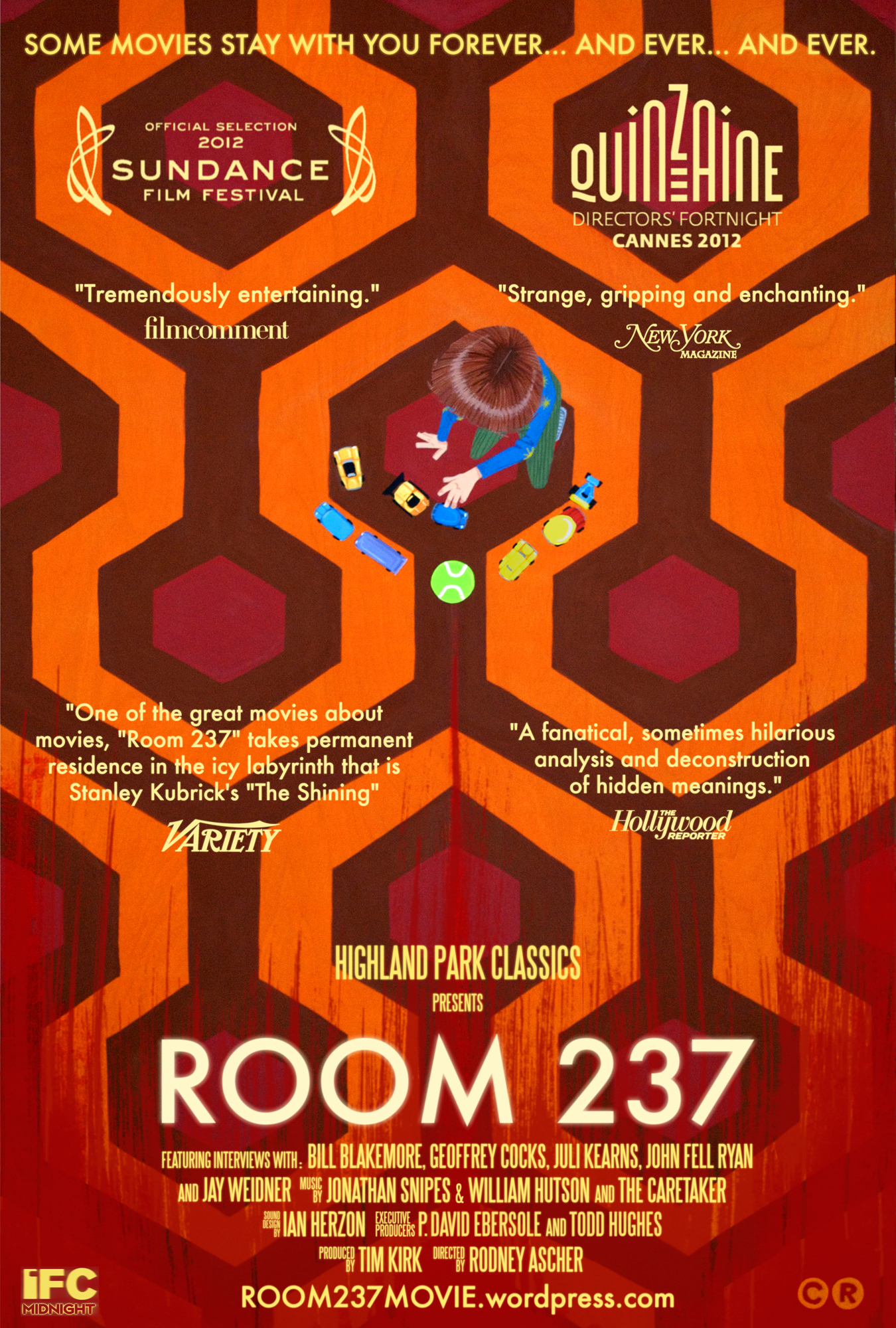
This essay is a cheap out for my inexcusable mosaic writing on the film Room 237 in light of two recently skimmed books, to contradict Stanley Kubrick’s “You tell people what things mean, and then they don’t mean anything anymore.”
I speak while standing on the shoulders of three probing pattern recognizers: Rodney Ascher, director of the film ROOM 237: BEING AN INQUIRY INTO THE SHINING IN 9 PARTS; Doug Harvey, editor of the book patacritical Interrogation Techniques Anthology Volume 3; and Robert Guffey, author of the book Cryptoscatology: Conspiracy Theory as Art Form. As comprehensivists, they utilize the we-are-all-crew-no-passengers-Here-Comes-Everybody mentality in the creative process. Bucky Fuller meets James Joyce, who asked “My consumers, are they not my producers?” Their respective posses’ “paths of glory” needle somnambulism.
Human inventions have hidden psychic effects that numb our sensibilities. We are not always aware of them. These people shake us out of complacency and reinvigorate awareness of these hidden effects...so we can cope with them. Let’s explore their interconnectedness with James Joyce, Marshall McLuhan and Marcel Duchamp, who said, “The artist of the future will only have to point.”
Ascher’s experimental documentary ROOM 237 points at five astute observers (referred here as “interviewees”) examining hidden meanings and allegories in Kubrick’s THE SHINING.
Harvey’s book points at the nexus between faulty translation, conspiracy theory, and the avant-garde.
Guffey’s book points at McLuhan’s “The police state has now become a work of art” to examine how and why humans engage in political research and mythology.
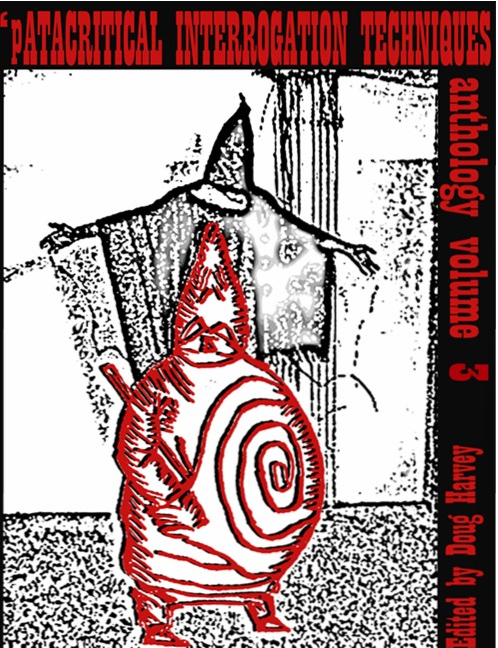
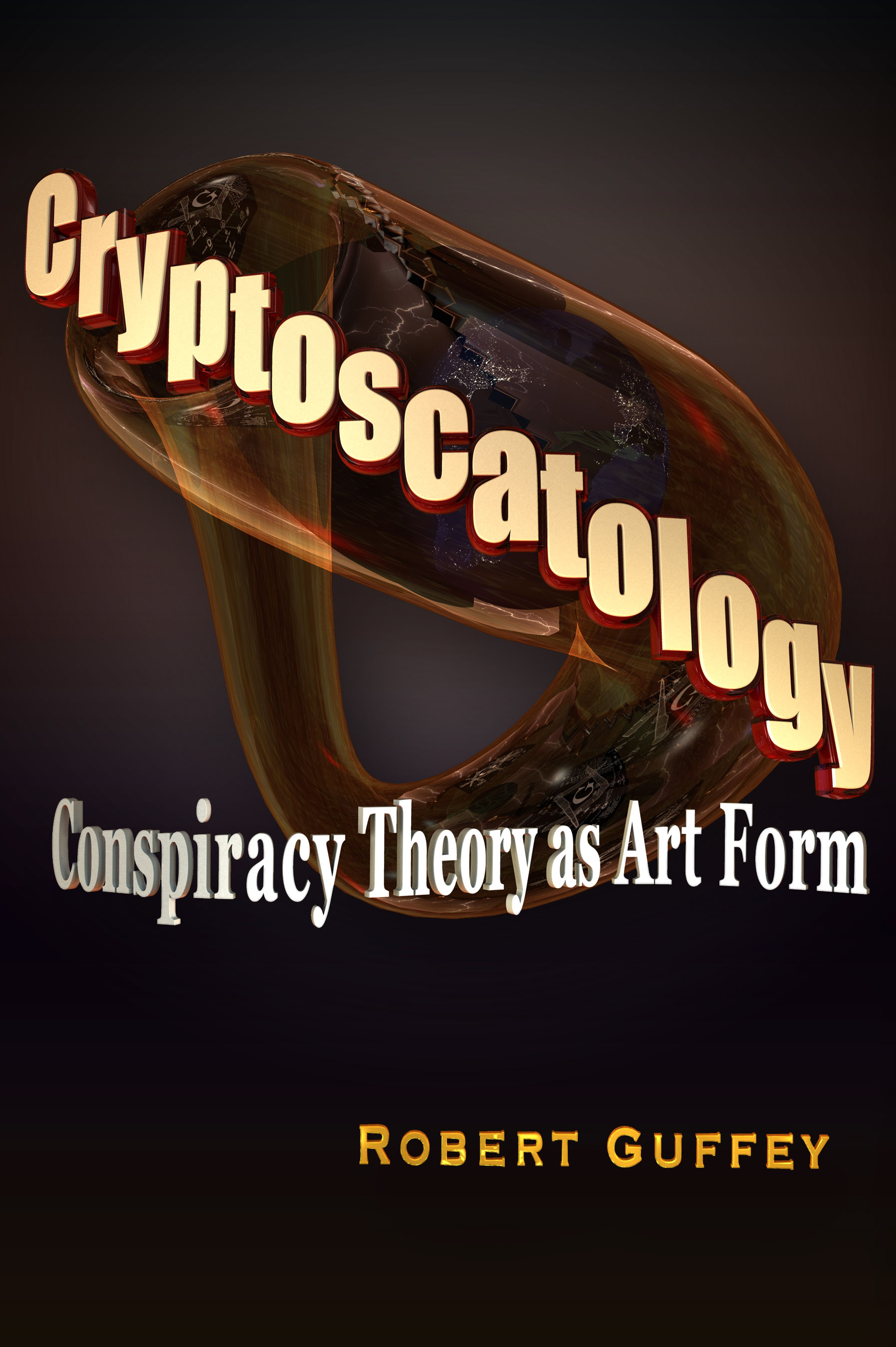
These translators mime mapmakers retracing their tracks like Danny does in THE SHINING to escape killer Jack, which evokes the last two questions of McLuhan’s Tetrad: What does it retrieve? And what does it flip into when pressed to an extreme (reversal)? “The negation of negation” says Craig Baldwin, whose influence is acknowledged by Ascher. Interviewee Weidner states: “Kubrick was faking the making of Stephen King’s novel.”
Suggestion: Answer a question with a new question? In ROOM 237, when asked “Why did Kubrick make THE SHINING so complicated,” interviewee John Fell Ryan retorts, “Why did James Joyce write Finnegans Wake?” To make language about language? To satirize information over-load? To stimulate MSU (“making stuff up”)? To actualize the “abnihilisation of the etym” (James Joyce’s words for making something out of nothing)? Ryan suggests “...it’s a way of opening doors from hermetically-sealed realities into possibilities.”
Marcel Duchamp said there are no solutions because there are no problems. How do you make art that’s not art? “Epiphany can release a moment from the shackles of time. For that moment, we awake from the nightmare of history. The Wake is what history is when it ceases to be history.” —groupnameforgrapejuice.blogspot.com
Extensions of extensions? Percept plunder for the recent future?
Ascher never shows the faces of the interviewees, but skillfully illustrates, juxtaposes, and points at an amazing array of clips from the likes of 13 different Kubrick films, Fellini, Hitchcock, Dali, Murnau, Scooby Doo, Roger Corman, Michael Powell, and Vivian Kubrick’s documentary of her Dad making THE SHINING. On the set, we see a production assistant suddenly jump back from the spectacle of Jack Nicholson wildly warming up to swing the ax. Nicholson’s ax attack may be a metaphor for “content.” The production assistant may represent Kubrick just trying to get out of the way of “content.”
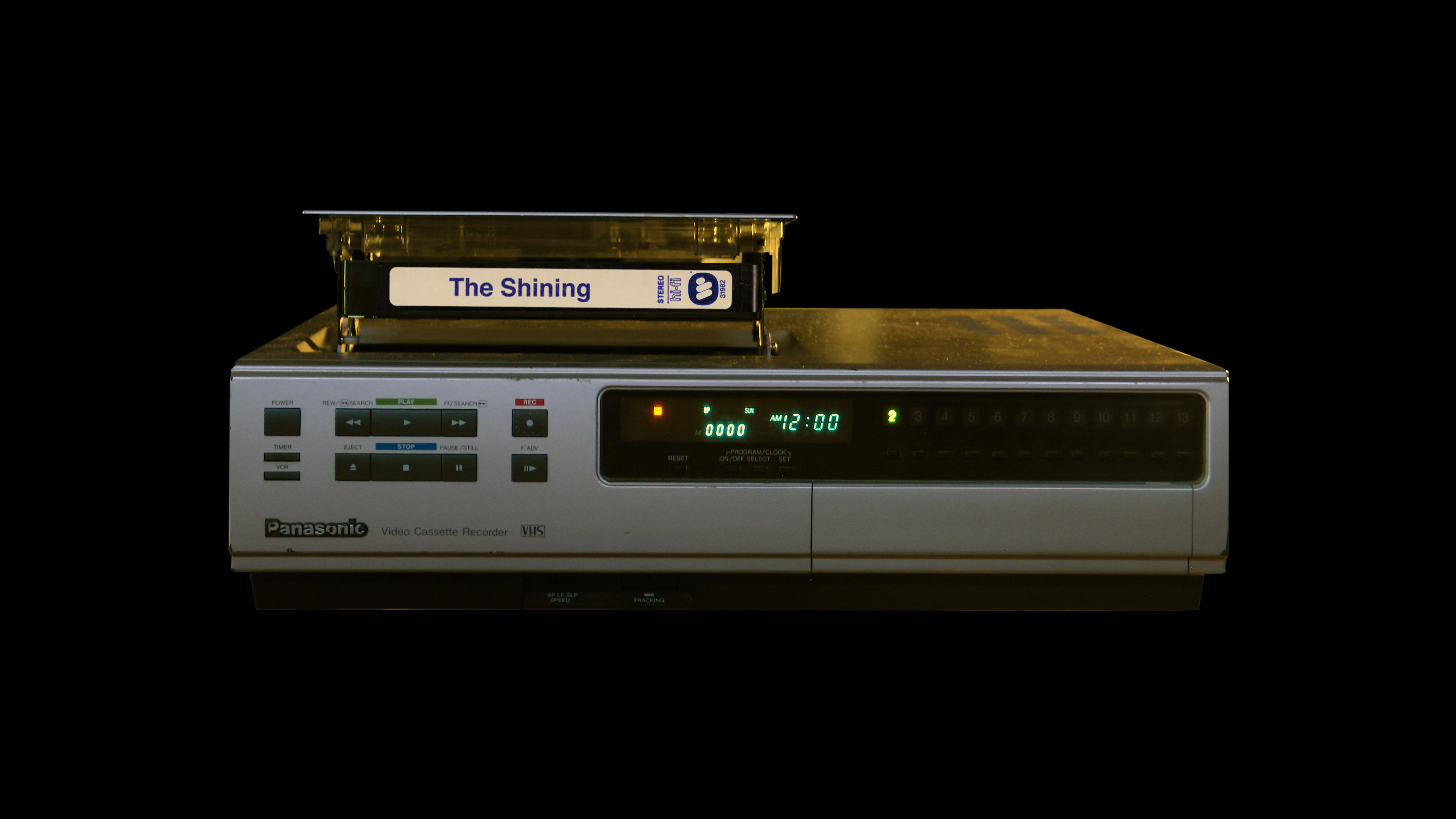
You decide what it’s all about. Is Stanley pointing to “user as content?” That’s the upgrade of “the medium is the message” by McLuhan, who inquired “How about technologies as the collective unconscious, and art as the collective unconsciousness?”
Interviewee Bill Blakemore articulates that Kubrick may be pointing to: “...things we don’t want to look at...he [Kubrick] boiled it down til he got the universal human and global patterns that make it so real...Kubrick is thinking about the implications of everything that exists.” That’s para-media-ecology: the extensive relationships of our inventions and their environments. Very Wakean indeed.
Blakemore continues, “...the power of the genie [like] the essence of art is in its confinement...boiling it down to an emblematic symbol that’s got all of life in it.” Attention: ALL US FINNEGANS...WAKE!
Ah, secrets. Joseph Beuys said to make the secrets productive. Lew Welch said to guard the secrets and constantly reveal them. But Wakean Thorton Wilder nailed it: “Art is confession; art is the secret told. But art is not only the desire to tell one’s secret; it is the desire to tell it and hide it at the same time.” Guffey writes: “As Edgar Allan Poe demonstrated over a hundred years ago in The Purloined Letter, the best way to hide anything is to leave it out in the open.” Stefan Zweig’s novel The Burning Secret was an unrealized Kubrick film.
ROOM 237 is “a film about film viewing” at the same time it’s “a film about filmmaking.” It double-duty interrobangs all previous Kubrick documentaries.
Harvey uncovers the head/heart secrets conundrum (kinda like Yip Harburg’s “a song makes you feel a thought”). Harvey, much like Ascher and Guffey, is a social engineer and an unacknowledged legislator of the world. He delves deep into pointing by reprinting the full transcript of Colonel Craig Baldwin’s fake fake documentary TRIBULATION 99: ALIEN ANOMALIES UNDER AMERICA. Baldwin proves himself as sharp a wit writer as he is a riveting filmmaker with lines like, “They realize you can’t kill something that isn’t alive,” and JFK’s “assassination must have been by an android like Oswald.”
Harvey reinvents the ten thunders (ten 100 letter words in the Wake) with his own inventive example of MSU: Photo Captions From Old National Geographic Magazines Arranged So Their Initials Spell Out the Ten Thunderclaps from Finnegans Wake. “The thunderclap is a resonating logos that represents a transformation of human culture.”—Eric McLuhan. The first thunder starts with a “b,” which Harvey assigns to “Behind the potato, tricks and technology.” He invigorates and illuminates insights, much like Ascher and Guffey.
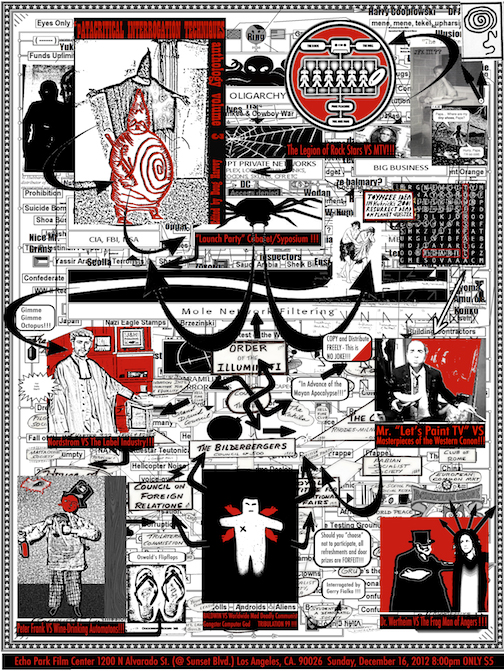
Baldwin read one too many copies of the magazine Covert Action Bulletin and wrote it all down in the TRIBULATION 99 script. Joyce listened to hours of shortwave radio in Paris in the 1920s, and wrote it all down. They both channeled the tribal-drum memory theater. Kubrick developed his optic-art roots as a photographer for Look magazine.
This magazine pattern reiterates McLuhan’s: “Joyce uses ‘the magazine’ metaphor throughout the Wake apropos ‘the magazine wall where the maggies seen all,’ i.e., the magi, the wise people saw the entire story of human technology in the structure of the human body.” Neuroscience—the new pop sensation!
Ascher, Harvey, and Guffey are cosmic DJs: MC-ULTRAs (reimagining the CIA mind-control program MK-ULTRA) as the antennae of the race—broadcasting the hidden effects of technologies. The “M” stands for mega-brains McLuhanizing Menippean memes—messages, mess ages, massages, mass ages. Me sage? The “C” stands for the candor of their cyclonic comprehensivism flipping into clairvoyant and conceptual continuity to help us cope with cloned ESP.
Let’s boogie to mashed-up musical manifestations of McLuhan’s “applied Joyce.” After McLuhan broke the Wake code by merging Menippean satire, Symbolism and technological determinism, Robert Dobbs (as quoted in Guffey’s book) yelps: “In software/wet-ware conditions we just have to think about something collectively and it’s done.”
Ascher, Harvey, and Guffey are cosmic DJs: MC-ULTRAs (reimagining the CIA mind-control program MK-ULTRA) as the antennae of the race—broadcasting the hidden effects of technologies.
“Joyce let language do the talking,” reports Robert Dobbs, who transformed McLuhan’s “We shape our tools then they shape us” into “We ape our tools then they ape us.” T.S. Eliot wrote about the watchdog of your mind being “content,” distracting us from awareness of the “form.”
Ascher hoicks up “form” by returning us to the very movie theater itself. We are constantly viewing clips of people watching films in a theater, which mirrors the very act we, as the audience, are performing. ROOM 237 is “a film about film viewing” at the same time it’s “a film about filmmaking.” It double-duty interrobangs all previous Kubrick documentaries.
One of the most far-out sounding observations in ROOM 237 is when interviewee Jay Weidner sees Kubrick’s face in the clouds. My parents raised me to look at clouds and let your imagination be active. Is that the drama of cognition nurturing MSU to create the new? Could this be the art museum without walls that’s accessible to everyone? Analysis of apprehension evidences mappings of anticipatory mindfulness. Freud said “The uncanny is the only feeling more powerfully experienced in art than in life.”
Are we spiders trapped in our own webs? Ascher, Harvey, and Guffey can help us pull the wool over our own eyes. When young Danny asks “What’s in room 237?” “Nothing and Stay Out!” is the response. Like the Wake, their works can be tools “engaging our minds to be better prepared for the salvation of comprehension,” as Joycean Bill Klaus puts it.
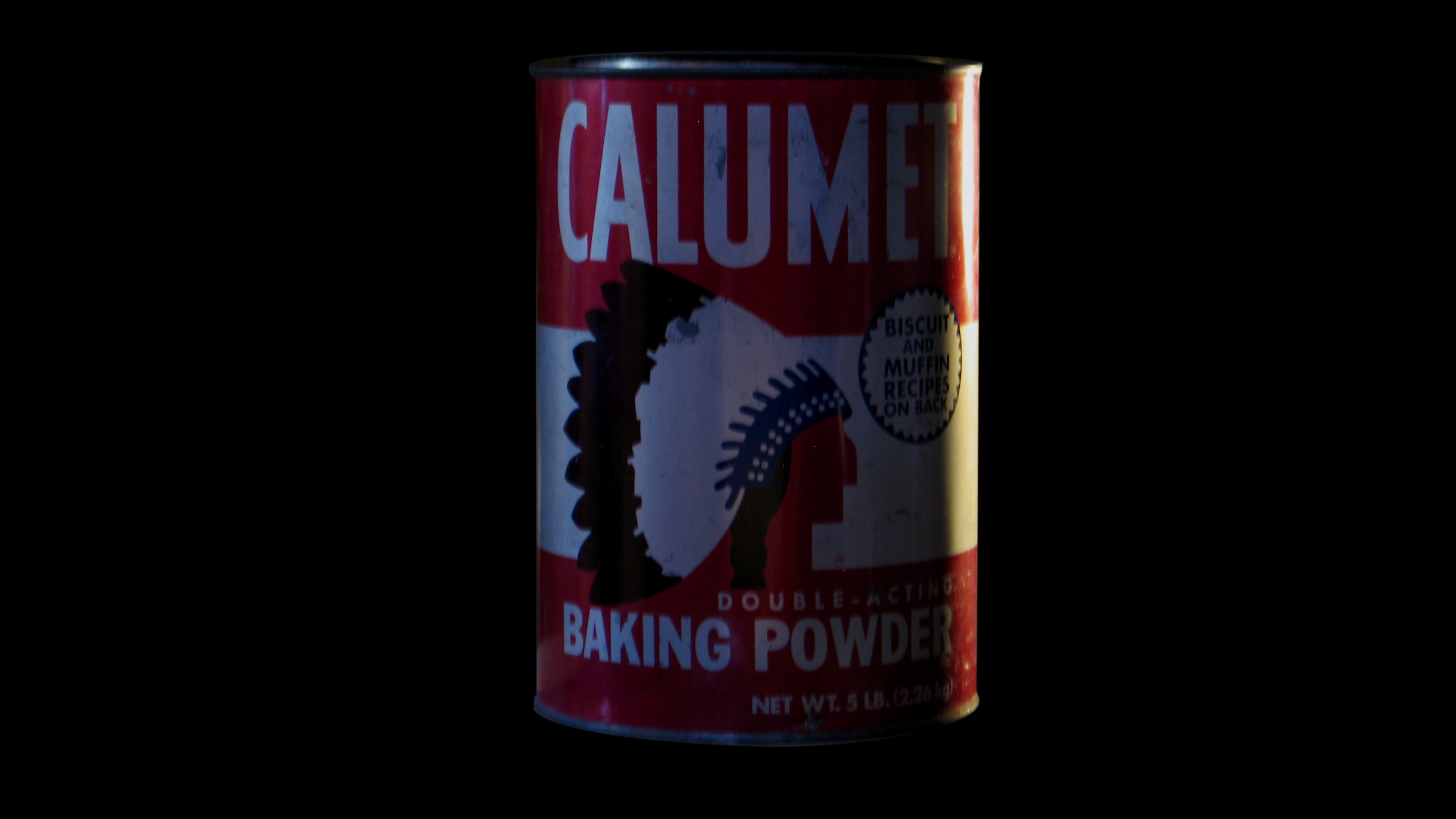
When asked what does 2001: A SPACE ODYSSEY mean? Kubrick said, “2001 is a nonverbal experience...to convolute McLuhan, the message is the medium.” Kubrick had a special private screening of 2001 for Marshall and his daughter Teri, who had to prevent him from walking out ten minutes into the film. Then twenty minutes into the Strauss waltz, Marshall was snoring. Harry Smith, who claimed Giordano Bruno invented cinema, stated that the function of film viewing is to put people to sleep—dreaming awake. Jean Cocteau said: “It is the filmmaker’s privilege to allow a large number of people to dream the same dream together.” Yoko Ono said: “A dream you dream alone is only a dream. A dream you dream together is reality.”
Guffey quotes the Wake: “Though Wonderlawn’s lost us for ever. Alis, alas, she broke the glass.” Blakemore continues: “The nature of dreams, according to some evolutionary psychologists, is a way for the brain in many species, including humans, to boil down previous experiences and add in that day’s experiences into seeing over-all universal patterns...so the subconscious is more ready to react. Like the way Kubrick made films—the way our brain creates memories and dreams—that’s his shining. He may thus, perhaps, be thought of as something like a mega-brain for the planet trying to boil down patterns and giving them back to us in the dream of a movie.”
Interviewee Juli Kearns wrote to me about first seeing 2001: “Here was a movie that wanted me to think about what I was seeing, and then what I had seen. What I had seen instead was all about encouraging me to exercise my intellect and search for meaning. What’s more, it was showing me how, in the way the scenes themselves, the tableaux, were not just settings but [a] highly interactive wealth of content. I think what happened is my ten-year-old dyslexic, holistic-thinking, pattern-seeking, deep-diving for meaning went wild...The final scene of a Kubrick film is never a closed door, but an open one with some bread crumbs littered about for those who linger in their seats hungry for more, and we follow.”
These MCs improve our ability to read between the lines, and to become media literate. Like John Fell Ryan spouts: “Kubrick plays on your acceptance and ignorance of visual information.” Ryan often laughs after his own quips. He pushes the Tetrad’s reversal question by curating a two-projector screening of THE SHINING, forwards and backwards overlaid at the same time. Ryan self-reflexively flips “all work and no play...” to “all play and no work...”
“...The final scene of a Kubrick film is never a closed door, but an open one with some bread crumbs littered about for those who linger in their seats hungry for more, and we follow.”—Juli Kearns
Kubrick roamed the cosmos with research into the books: The Uses of Enchantment: The Meaning and Importance of Fairy Tales by Bruno Bettelheim, and Subliminal Seduction by Wilson Bryan Key, who learned a lot from sitting at McLuhan’s feet. Both Joyce and Kubrick navigated the Odyssey.
How can you, as the reader, turn cliché into archetype? Guffey (and Ascher, Harvey & co) inventories The Teacher, Trickster, Sage, Monster, Mother, Double, Shaman, False Prophet, Shapeshifter, and Magician. These illuminating pattern-recognizers guide “you through the strange, confusing labyrinth of myths...around one corner you encountered wise men, around another you come face-to-face with minotaurs...” wrote Guffey. Seeing the paradoxical exuberance of being? Living questions anew?
After you view Ascher’s film, read Guffey’s afterword, and Harvey’s preface, then please report back to me. Brother, can you paradigm? Brothers and Sisters, can you spare a “crossmess parzel?” That’s Joyce’s combo burrito for Christmas parcel and crossword puzzle.
May we counter-spin “Nothing and Stay Out” to “Something and Enter?” Is the mystery of art the question whether art more pacifies or more activates? We all know it’s both and depends. Dear reader, how do you reinvent this question?
In our recontextualized duality discussion on whether humans are more heart or more head, historian Geoffrey Cocks, who has written two noted books on Kubrick, says “Concerning my Weltanschauung (world view) and Kubrick’s, I think Kubrick believed that evil and good were inextricably mixed, as do I. But I think he thought evil prevailed far too much and that the only recourse for hope was perhaps to choose the fiction (belief) that good exists enough so that there is some basis of hope for the future—this comes out in his last film, EYES WIDE SHUT.”
Was his end maybe his beginning? Is Kubrick’s multi-verse like the Wake: the cyclical flipping of “Nothing and Stay Out” into “Real Lies’d and Open” into “Reel Eyes’d and Open?”
MIC CHECK. Fo’ de final benediction, let’s ponder two quotes from Amos Vogel’s book Film as a Subversive Art:
But that the white eye-lid of the screen reflect its proper light, the Universe would go up in flames.
—Luis Bunuel
‘Don’t go on multiplying the mysteries,’ Unwin said.
‘They should be kept simple. Bear in mind Poe’s purloined letter, bear in mind Zangwill’s locked room.’
‘Or made complex,’ replied Dunraven. ‘Bear in mind the universe.’
—Jorge Luis Borges
◊
Special Thanks to Rodney Ascher, Doug Harvey, Robert Guffey, Suzy Williams, Tim Kirk, Bill Klaus, Robert Dobbs, Derek Gibb, and all the interviewees & Hear Comes Everybodies.
Gerry Fialka, genuine fake filmmaker and frequent contributor to OtherZine, lectures world-wide on experimental film, avant garde art, and subversive social media.
film: ROOM 237
book: 'patacritical Interrogation Techniques Anthology Volume 3
book: Cryptoscatology